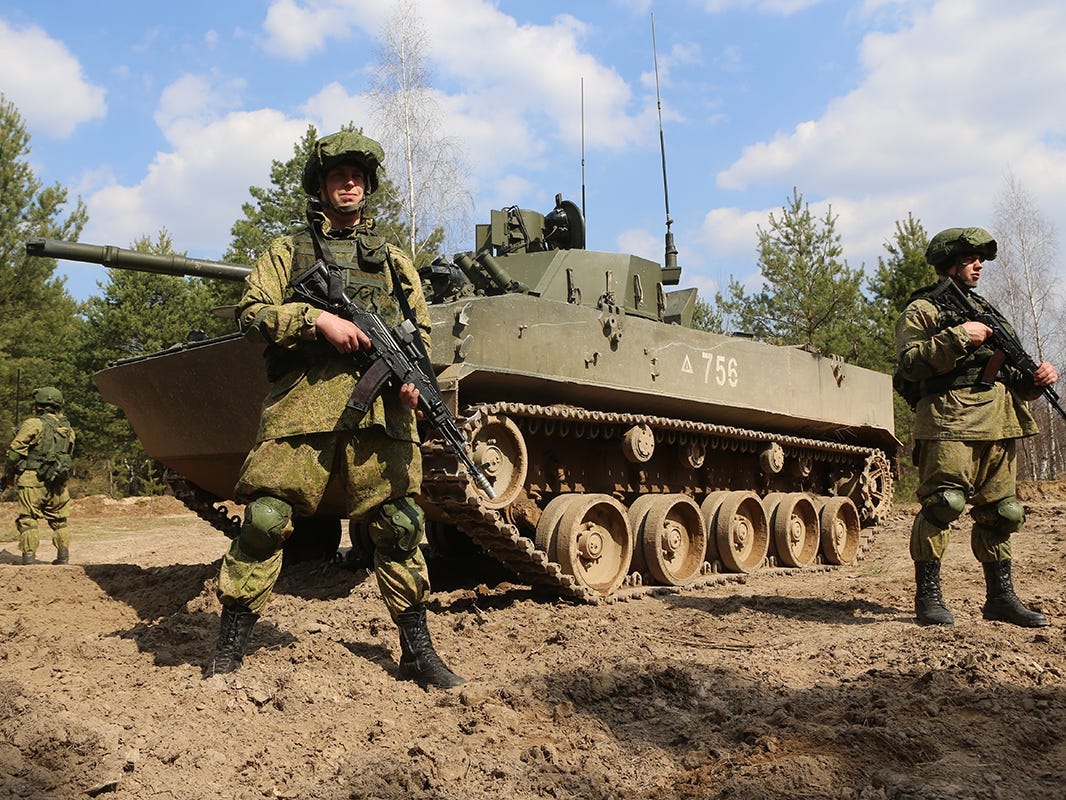“Re-Evaluating the Role of Russian Paratroopers After Disastrous Ukraine Conflict”
Russian paratroopers at Hostomel Airport on March 12, 2022. Russian Defense Ministry/Mil.ru
-
Russia’s elite airborne force, known as the VDV, has suffered heavy casualties in Ukraine.
-
These setbacks have prompted Russian commentators to question how the VDV is designed and deployed.
-
The questions raised about the role and value of paratroopers do not only affect the Russian military.
The heavy casualties suffered by Russian paratroopers in Ukraine have prompted a Russian expert to reconsider Russia’s airborne units.
Many of the recent criticisms of the performance of Russia’s elite parachute force, known as the VDV, have been leveled at lightly armed airborne units since World War II.
The problems range from poorly designed vehicles to airdrops carried out without first suppressing enemy air defenses. In the case of Russia, however, they also point to serious shortcomings in the VDV.
“As with every war in the past, the future of the air force is in question,” wrote commentator Alexander Timokhin in the Russian defense publication Military Review.
Russian paratroopers in the Kyiv region in March 2022. Russian Defense Ministry/Mil.ru
Despite the Kremlin’s crackdown on the Russian media, it is notable that unofficial bloggers and publications such as Military Review have been allowed to criticize Russia’s poor military performance in Ukraine.
Russia’s massive airborne force, made up of 45,000 paratroopers in four divisions, is actually a separate military branch that serves as a shock force and rapid intervention force. Russia’s February 24, 2022 invasion of Ukraine began with a surprise VDV helicopter attack on Hostomel airfield northwest of Kyiv.
Several helicopters were shot down by anti-aircraft missiles, but the Russians still managed to capture the base. It was intended to be an airhead for cargo planes to carry troops and vehicles in support of the isolated paratroopers who would then advance on Kyiv.
But the big Il-76 cargo planes never arrived. Ukrainian forces attacked and pinned down the paratroopers, who eventually retreated to the safety of armored columns advancing on Kyiv. The VDV then became the elite infantry leading the Russian armored columns – a role they were not designed for. The casualties proved so severe that some paratroopers reportedly refused to fight.
Russian paratroopers with a BMD-4M during an exercise in April 2017. Russian Defense Ministry/Mil.ru
What went wrong? Timokhin lists several problems with the VDV.
For one, the paratroopers were equipped with lightly armored, air-droppable armored vehicles, such as the BMD-4 infantry fighting vehicle.
“The BMD-4 is about the same cost as the T-90M tank,” Timokhin said, referring to one of Russia’s newest tanks. “However, it can be destroyed with small arms fire.”
One can imagine what a Javelin or NLAW anti-tank missile could do to a BMD-4 and its occupants. (This video shows an actual attack on one.)
Parachute units inherently lack heavy weapons such as main battle tanks and artillery for fighting enemy mechanized forces. However, according to Timokhin, the VDV squads were too small and underarmed to fight on foot. They also lack adequate air defense systems.
Ironically, the Soviet-era VDV featured a number of air-droppable devices, including trucks and several rocket launchers.
Russian paratroopers unload a truck from an IL-76 to join the NATO peacekeeping operation in Bosnia January 1996.US Air Force/Senior Airman Ken Bergmann
“Now the Airborne Forces have many vehicles that cannot be parachuted,” Timokhin wrote. “There are tanks, but they are all lightly armored vehicles with weak armor. It is not clear how to rationally use all of this.”
Although Russia has four paratroop divisions, it lacks enough transport planes to deploy even an entire division at a time. Russia’s military also does not have a clear concept of how to use air forces, for example to ensure air superiority over flight paths and the drop area or to neutralize air defenses, Timokhin added.
The VDV is also recruiting a “large number of selected personnel who are much better trained and more expensive than the ground forces, whose potential cannot be fully realized,” Timokhin said. At the same time, the Russian military lacks adequate infantry “for operations in the mountains and in inaccessible terrain and for attacks on cities”.
This point underscores the debate about the value of air forces – a debate that is not unique to Russia.
Since the first use of paratroopers in World War II, critics in many armies – including the US and British militaries – have complained that airborne and special forces units are siphoning off the best soldiers, leaving less-skilled personnel to fill the regular infantry.
Russian paratroopers during an exercise in Ussuriysk in October 2017. Russian Defense Ministry/Mil.ru
At the same time, parachute units are fragile. German paratroopers were shot dead in their parachutes as they landed in Crete in May 1941. Although they eventually captured the island, casualties were so high that Hitler banned airborne operations for the rest of the war.
British paratroopers who jumped “a bridge too far” near Arnhem were surrounded and ultimately destroyed by German mechanized troops during Operation Market-Garden in September 1944.
Timokhin isn’t calling for the abolition of the Russian Airborne Corps, instead calling for an assessment of the capabilities the force does and doesn’t need, but his analysis raises a question for military leaders in Russia and around the world.
Given the attrition in Ukraine — where soldiers in trenches use up massive amounts of ammunition — Russia needs a few elite units to bolster underperforming regular ground forces during key operations, or is it better to disperse the best soldiers and increase the overall quality of infantry ?
Michael Peck is a defense writer whose work has appeared in Forbes, Defense News, Foreign Policy Magazine, and other publications. He has a Masters in Political Science. Keep following him Twitter and LinkedIn.
Read the original article on Business Insider
Don’t miss interesting posts on Famousbio










